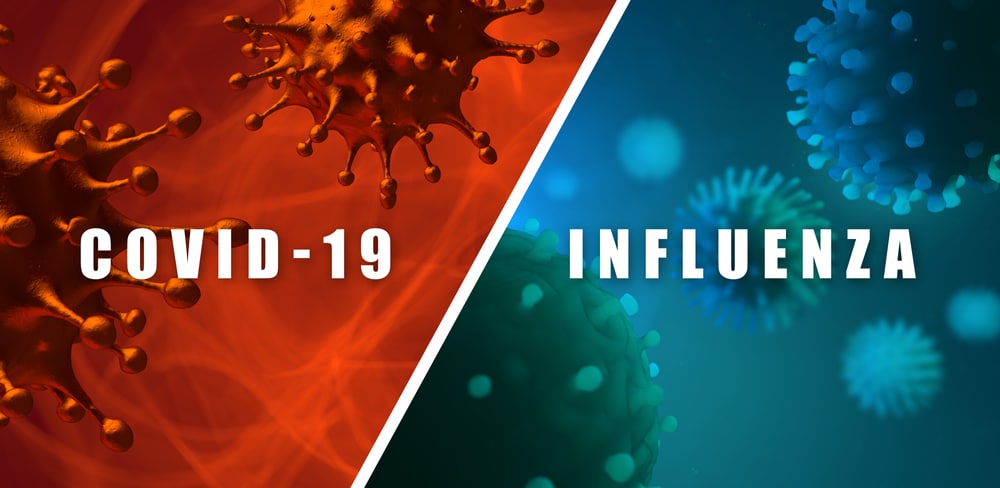The arrival of the fall and winter months signals many things, including the beginning of flu season. According to the Centers for Disease Control and Prevention (CDC), flu activity peaks between December and February. This means that the COVID-19 pandemic isn’t the only public health concern as we approach the winter months.
This combination has public health experts fearing a potential “twindemic” in surges of COVID-19 cases and another deadly flu season. As such, the CDC is urging the public to take action to avoid another deadly flu season and prevent further spread of COVID-19 cases.
For more information on COVID-19 and how it may affect your business, check out Van Wyk’s coronavirus resource center.
Flu vs. COVID-19 Symptoms
Because both the flu and COVID-19 affect the respiratory system, it can be difficult to determine whether you have the flu or COVID-19. Check out the CDC’s official list of similarities and differences. A key differentiating symptom is that COVID-19 can cause a loss of taste and/or smell.
The flu is most often associated with the sudden onset of fever, headache, fatigue, muscle aches, congestion, cough and sore throat. Most people recover within a few days to less than two weeks. Occasionally, complications such as pneumonia, bronchitis or other infections can occur. Seasonal influenza can cause serious complications for people of any age, but children and the elderly are more vulnerable.
The list of COVID-19 symptoms is vast, and the disease affects people differently, with some experiencing little to no symptoms and others experiencing severe illness. Generally, symptoms can appear two to 14 days following exposure to COVID-19. According to the CDC, the most common COVID-19 symptoms include:
- Fever or chills
- Cough
- Shortness of breath or difficulty breathing
- Fatigue
- Muscle or body aches
- Headache
- New loss of taste or smell
- Sore throat
- Congestion or runny nose
- Nausea or vomiting
- Diarrhea
Because there is some overlap between the symptoms, it may be difficult to determine whether you have the flu or COVID-19 without being tested. As such, if you believe you have the flu or COVID-19, please call your doctor and explain your symptoms before going to a facility to seek care. Doing so will ensure that you receive the care you need without risking the spread of COVID-19.
Prevention
In preparation for a potential twindemic this fall and winter, take these steps to protect yourself and loved ones:
- Get the flu vaccine. The flu vaccine is your best chance of preventing the illness. Currently, the CDC recommends that anyone over 6 months of age receive an annual flu vaccine by the end of October. Talk to your doctor to learn more.
- Avoid close contact with people who are sick, and stay away from others when you feel under the weather.
- Practice social distancing, which means staying at least 6 feet away from others, when out in public.
- Wear a protective face covering or cloth mask when out in public.
- Avoid large gatherings, especially those that aren’t socially distanced and don’t require masks or face coverings.
- Wash your hands often using soap and warm water to protect against germs. If soap and water aren’t available, use a hand sanitizer that’s been approved for use by the Food and Drug Administration.
- Get plenty of sleep, stay physically active and drink plenty of water to keep your immune system strong.
- Manage your stress and eat a nutritious diet rich in healthy grains, fruits, vegetables and fiber.
- Clean surfaces and common touchpoints regularly, especially if you have children who are attending school in-person. We put together a comprehensive guide to maintaining a clean and disinfected household.
Click here to learn more about the CDC’s prevention recommendations for both the flu and COVID-19.
Take Action Today
Do your part to stay safe during the COVID-19 pandemic and flu season. Luckily, many of the actions you are already taking against the coronavirus will also help you avoid catching the flu. By taking action, you can help prevent the spread of COVID-19 and another deadly flu season.

